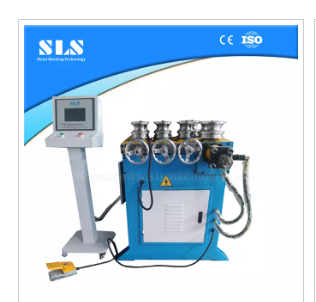Tube tapering is a crucial process in various industries, including automotive, aerospace, and manufacturing. It involves reducing the diameter of a tube over its length, providing essential components with specific geometrical properties. Precision tube tapering machines bring significant advantages over traditional manual methods, boosting efficiency, accuracy, and repeatability.
The Shift to Automation
Transition to automated tube tapering has transformed production lines. Unlike manual tapering, which relies heavily on operator skill and often results in variability, machines like the tube tapering machine ensure precise control over the tapering process. This equipment can consistently produce tapers within tight tolerances, typically achieving dimensional accuracies within 0.01 mm.
Industries report a production increase of up to 70% when switching from manual to automated tapering processes. Additionally, the error rate drops significantly, as automated machines reduce human-induced errors, leading to a more consistent product quality.
Cost-Effectiveness and Return on Investment
Investing in a tube tapering machine can seem expensive upfront but pays dividends in the long run. Automated tapering machines reduce the need for frequent quality checks and reworks, which are common in manual processes. By ensuring high precision from the start, businesses save on material costs and waste management.
A study by a major automotive parts manufacturer revealed a 20% reduction in operational costs after integrating automated tapering machines. The machines also allow for the use of cheaper raw materials without compromising the final product's quality, further driving down costs.
Enhanced Capabilities and Material Handling
Advanced tube tapering machines handle a variety of materials, from soft aluminum to tough stainless steel, without the need for multiple setup changes. This versatility is vital in operations that require working with different metals, as it minimizes downtime and maximizes output.
The machines can also perform multiple processes in one setup, such as cutting, cleaning, and tapering, streamlining the production line. This integration not only speeds up the process but also reduces the likelihood of material damage since the tube is handled less frequently.
Future Trends in Tube Tapering
The future of tube tapering sees a trend towards even more integrated systems that combine 3D scanning and CNC technology. These advancements will allow for real-time adjustments during the tapering process, further enhancing precision and reducing waste.
As industries continue to push for higher efficiency and lower costs, the role of automated tapering machines will only grow. With ongoing technological advancements, the capabilities of these machines are expected to expand, making them an even more essential part of modern manufacturing processes.
In an industry that values precision, efficiency, and versatility, the tube tapering machine represents a significant step forward. Investing in such technology not only improves product quality but also offers substantial economic advantages, ensuring businesses remain competitive in a challenging market.
